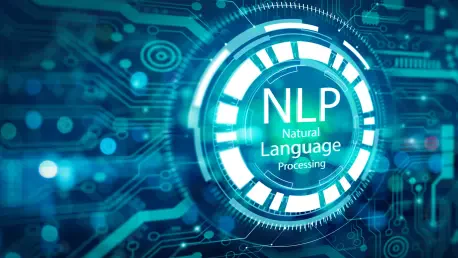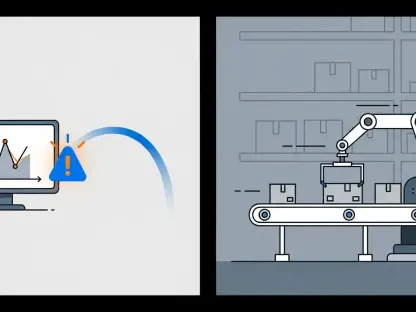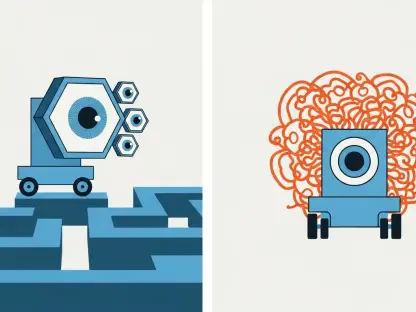Listen to the Article
Artificial intelligence (AI) has established itself as the future in the corporate world. Regardless of your institution’s needs, your goals for the upcoming years, or your industry’s overall evolution—you cannot fall behind on innovation and technological breakthroughs trends.
But decision-makers across the B2B sector have one key question to answer before getting the chance to use this new branch of tech success: which Large Language Models (LLM) are the best ones to consider investing in?
The answer isn’t one that will come to you easily. It depends on a lot of factors, from your short-term goals to long-term initiatives. You’ll also need to take into consideration other aspects of your day-to-day work, such as the sector you’re working in, how your employees might use it, how reliable the provider is, and whether they are flexible enough to fit your entire roadmap.
What’s the very first step? Understanding what you’re working with (to avoid future headaches due to inefficiencies caused by a bad choice).
Large Language Models have emerged recently, with the growth of generative artificial intelligence. These models are trained on vast amounts of texts and data to perform a variety of tasks in a way that emulates human intelligence. In fact, they’re useful for a large variety of workflows; such as generating content or automation operations, improving customer service, or enhancing your decision-making edge.
So, here are three LLMs that will stand out in 2025—for their performance, enterprise features, and industry applicability.
OpenAI GPT-4.5
OpenAI has been the one pioneer to define what artificial intelligence is capable of doing for modern society. Unsurprisingly, they still have the leadership in the LLM ranking, through solutions that offer next-level performance for general-purpose tasks, understanding of complex contexts, coding assistance, an extended token window, and cost efficiency.
What Are the Advantages of Adopting It?
Many of your peers use GPT-4.5 due to the opportunity it offers to balance expenses with a next-gen artificial intelligent edge. It is available through OpenAI’s API—but can also be integrated easily into Microsoft’s Azure OpenAI Services and with product like Microsoft Copilot, to make it easy to deploy in your enterprise ecosystems. That’s not all—GPT-4.5 also supports multimodal inputs in select environments, enabling image and code interpretation alongside text.
Applications That’ll Benefit Your Company:
Creating artificial intelligence chatbots
Drafting legal, technical, and marketing documents with higher accuracy
Enabling intelligent code completion and debugging
Conducting sentiment analysis, market research, and competitor benchmarking
Anthropic Claude 3.5 Sonnet
Antrophic’s Claude 3.7 Sonnet is, at the moment, part of the Claude 3 family, well-renowned for the speed with which it has caught up to OpenAI’s own efficiencies. For companies looking for speed, reliable performance, and stability, its strong safety alignment and interpretability features are some core elements to focus on—and which will justify a long-term investment. Claude 3.7 Sonnet is also beneficial due to its fundamental foundation, built on Constitutional artificial intelligence, which puts the emphasis on transparent and ethical behavior (making it ideal for operating in high-trust environments).
It also delivers the benefit of bringing to your organization one of the largest context windows in the AI niche (over 200,000 tokens), which allows you to process entire workflows of documents, including reports, legal contracts, or long training manuals—all in one session.
What Are the Advantages of Adopting It?
Compared to other Large Language Models, Claude excels in nuanced and natural communications that are meant to deliver contextually aware and polite interactions. It’s becoming much more favored, over alternatives, in risk-averse industries due to its just, well-explained, and accurate outputs.
Applications That’ll Benefit Your Company:
Legal document summarization and analysis
Aid in compliance automation and policy audits
Client interactions in regulated environments, such as healthcare and finances
Great tooling for training and educational content delivery at scale
Google Gemini 2.5 Pro
Unsurprisingly, Google isn’t a company to be left behind when it comes to pushing forward innovation in all aspects of technology—including AI and LLMs. And today, they’ve brought to the business landscape a powerful multimodal model that merges language, vision, and audio understanding: Gemini 2.5 Pro. The model is created to deliver rapid inference speeds and is highly optimized for integration and usage with other tools from the Google Cloud and Workspace suite, including: Vertex AI, BigQuery, and Duet AI.
Additionally, it offers a next-gen edge for multilingual capabilities and real time data integration, both functionalities making it ideal for content-heavy or globally distributed businesses that must operate in a large variety of diverse markets.
What Are the Advantages of Adopting It?
Gemini 2.5 Pro’s real-time multimodal ability allows it to fit into the much broader Google Cloud ecosystem—which unlocks the unique edge companies need when seeking end-to-end AI support across media formats. It’s a trustworthy companion whose foundation was established to aid all of your business needs, where your operations need an AI-powered advantage most.
Applications That’ll Benefit Your Company:
Automated multimedia content creation (such as text-to-image transitions, video summarization)
AI-driven localization and translation services
Natural language querying of structured databases for your business intelligence
Real-time personalization in the delivery of digital experiences
Closing Thoughts
As you move deeper into 2025, one thing is clear in the wider scheme of innovation, resilience, and sustainability: integrating LLMs into your current and future strategies is not a question of if, but one of when and how. With tools like OpenAI’s GPT-4.1, Anthropic’s Claude 3.5 Sonnet, and Google Gemini 2.5 Pro available, enterprises can’t afford to sleep on the possibilities offered for operational and productivity improvements.
Each LLM brings its own strengths to the table. Regardless of whether you’re focused on leveraging multimodal capabilities, achieving an ethical AI alignment for your company’s culture, or unlock ecosystem integrations that will allow you to upgrade efficiencies over a wide array of platforms and tools—there’s something for you in the market.
But this large variety also means that you need to find the best model for your specific business goals and context.
Ultimately, making a final decision and selecting your LLM is a strategic decision that must be done the right way. Failing to choose a model that will fit your long-term innovation goals can lead to inefficiencies and severe cost losses. So, your decision-making should be guided by clarity of purpose, and an accurate understanding of what your organization needs both in the short and long-term scheme of plans, as well as focus on the unique features each provider offers.
By staying agile and investing in an approach suitable for your digital ecosystem and environment, you can lead—and not just follow—the next wave of AI-powered innovation.









